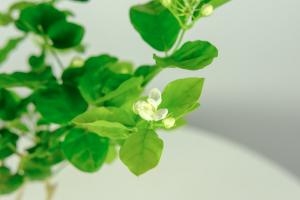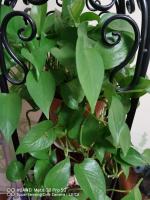What if Weed Plant is Pot Bound?
As a cannabis grower, you want to ensure your plants are healthy and yielding buds as abundantly as possible. One of the things that can compromise the health of your plants is pot bound, also known as root-bound. But what is a pot-bound plant, and what can you do to fix it? In this article, we look at what pot-bound plants are, some possible consequences, and what you can do to avoid or fix it.
What is a Pot-Bound Plant?
When a plant grows, it needs space to accommodate its roots. A pot-bound plant happens when the roots of a cannabis plant have outgrown the space in its container. It occurs when the roots have grown tightly against the walls of the pot, creating a root-bound situation. The plant's growth slows down, which could have negative consequences on its overall health and yield.
What are the Consequences of a Pot-Bound Plant?
Several factors can compromise the health of a pot-bound plant, including:
A restricted growth: A pot-bound plant tends to have diminished potential since the roots have little space to spread out, and the nutrients are depleted from the soil faster.
Poor water retention: Pot-bound plants may require frequent watering since the roots cannot retain sufficient water.
Higher risk of pests and disease: When soil gets depleted of nutrients, the plant's immunity reduces, thus increases its susceptibility to diseases and pests.
How to Fix a Pot-Bound Plant?
Although pot-bound is risky to the health of your plants, you still have many options to fix it. Here are some of the things you can do:
Repot Your Plant
Transplanting is an effective method of saving the plant from the ill effects of being pot-bound. The idea is to remove the weed plant from the pot, rinse off its root ball in lukewarm water, loosen the soil from the roots gently, and transplant it into a more spacious pot with fresh soil.
Trim Your Plant's Roots
Trimming your plant's roots can also alleviate the problematic situation. Cut off one-third of the roots and the outer layer of the root ball before transplanting it to a fresh container with new soil. Shortening the roots encourages new growth.
Use Hydroponics
Hydroponics systems that allow your plants to grow without soil, with water and nutrients delivered directly to the roots in a water-based medium, are another viable option. Plants grown hydroponically rarely suffer from pot-bound issues.
Conclusion
Pot-bound is a risky situation that can compromise the health and yield of your weed plants. The good news is that repotting your plants, trimming the roots, or trying out hydroponics can fix the issue. Ensure to keep an eye out for signs of pot-bound plants, such as slower growth, and address the issue promptly to keep your plants healthy and productive.

 how many times do yo...
how many times do yo... how many planted tre...
how many planted tre... how many pine trees ...
how many pine trees ... how many pecan trees...
how many pecan trees... how many plants comp...
how many plants comp... how many plants can ...
how many plants can ... how many plants and ...
how many plants and ... how many pepper plan...
how many pepper plan...































